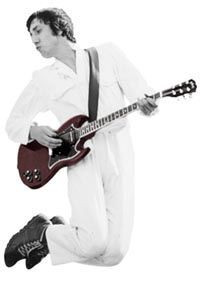The electric guitar, an icon of modern music, might seem like magic when you hear its soaring solos and powerful riffs. But beneath the mystique lies a fascinating blend of engineering and physics. The quest to amplify the humble guitar began long before rock and roll, driven by a need to make the instrument louder and more versatile.
Early inventors in the 19th century were already toying with electrical amplification for instruments like music boxes. However, it wasn’t until the 1920s, with the advancements in radio technology, that the idea of an amplified guitar started to take shape. One of the pioneers was Lloyd Loar at Gibson, who in 1924 developed what we now know as an electric pickup. Imagine trying to capture the delicate vibrations of guitar strings and boost them – Loar’s invention was a crucial first step. His design used the guitar’s bridge to transmit string vibrations to a magnet and coil system. These early pickups, while innovative, still struggled to produce a strong signal. The Stromberg-Voisinet company also experimented in 1928, using a similar approach but picking up vibrations from the guitar’s soundboard.
 Pete Townshend of The Who playing a Gibson SG electric guitar, highlighting the instrument's iconic design and association with famous musicians
Pete Townshend of The Who playing a Gibson SG electric guitar, highlighting the instrument's iconic design and association with famous musicians
The real breakthrough came when engineers shifted to a more direct method of capturing sound. Instead of relying on the bridge or soundboard, they focused on the strings themselves. This is where the concept of the electromagnet became central to how an electric guitar works. The electromagnet in a guitar pickup essentially “listens” to the vibrations of the steel strings. When a string vibrates near the pickup’s magnetic field, it disrupts the field, and this disturbance is converted into a tiny electrical signal. This signal, though small, is then sent to an amplifier, which dramatically increases its strength, allowing us to hear the guitar loud and clear.
The “Frying Pan,” developed by George Beauchamp and Adolph Rickenbacker in 1932, was the first commercially successful electric guitar based on this principle. It was designed as a Hawaiian-style lap steel guitar, and its immediate popularity demonstrated the effectiveness of this new pickup technology. However, the standard “Spanish” style electric guitar, the kind we typically see today, initially faced resistance because its amplified sound was so different from the familiar acoustic guitar tones. It took artists like Charlie Christian in 1939 to begin exploring and defining a new playing style specifically suited to the electric guitar.
Further innovation led to the solid-body electric guitar. Pioneers like Les Paul, who famously built “The Log” from a solid block of pine, and Leo Fender, with his mass-produced solid-body guitars in the 1950s, revolutionized the instrument. Solid bodies eliminated feedback issues common in hollow-body electric guitars and offered greater sustain, meaning notes could ring out for longer. These advancements cemented the electric guitar’s place in music history. Icons of rock and roll in the 50s and 60s, playing instruments like the Gibson Les Paul and Fender Stratocaster, solidified the electric guitar as a cultural phenomenon. From its humble beginnings as an experiment in amplification, the electric guitar has become an endlessly evolving instrument, continuing to inspire musicians and shape the sound of music across genres.


